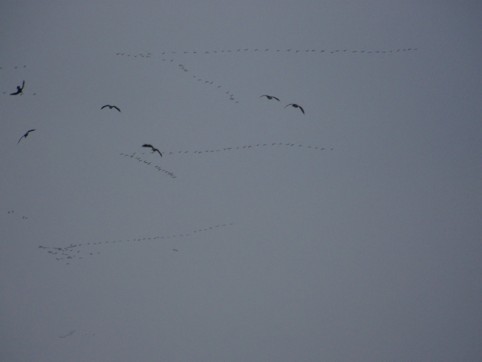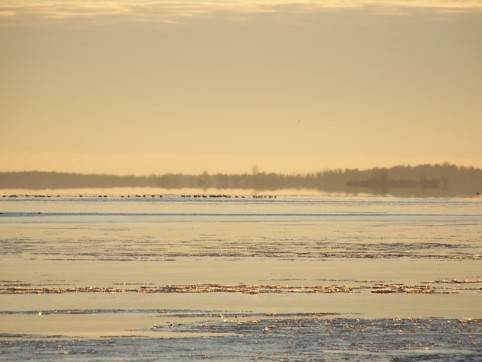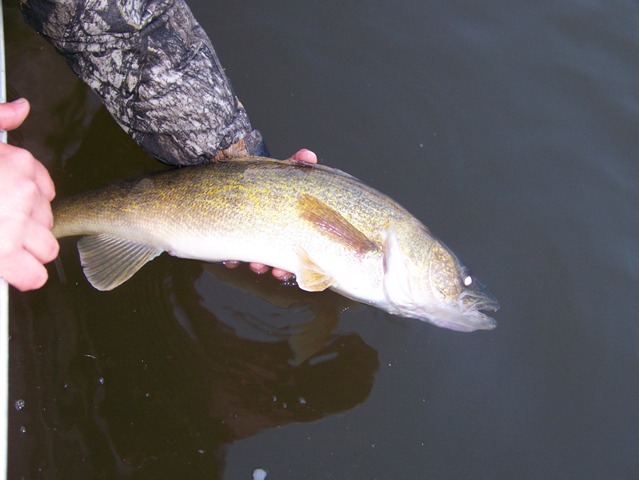 Â
Â
The weather changed as a cold front moved through Friday night just before walleye season opened on St-Francis at midnight. The wind was pushing pretty strong from the north and the air was crisp. I thought we’d have serious problems landing fish. Mike and I wanted to originally set out for pike, but we decided that we might as well try and focus on warmer feeder rivers to find still active fish early in the day. As we made our way to one such river just at the break of dawn on Saturday we found other anglers there who had the same idea. Fishing was pretty slow based on the comments we heard from other boats. People were catching a lot of small bass, pike and catfish but the walleye weren’t overly eager to become anyone’s dinner. I told Mike that I though the best way to land some of these rather sluggish ‘eyes would be to cover a lot of water and slow our troll to a crawl. Most people in there were trolling with their large engine, but we opted to go with the stealthy trolling motor approach. Then I slowed us down even more by lowering the setting so that the boat ended up barely moving. About 10 minutes into our first run we found this starter fish hanging on a drop-off ledge near a water intake.
    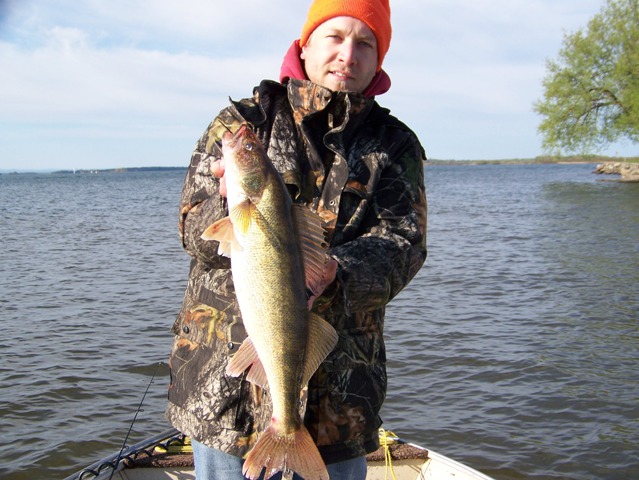
She wasn’t a monster but certainly a very respectable first walleye of the season. As the day wore on, the action really slowed, although we did manage to boat a few pike and this beauty smallmouth. The bass wasn’t in season though so after a really quick pic (we had the camera ready as soon as we saw the fish jump) it was released promptly. Bass, unlike other freshwater species actually fiercely guard their nests after the young fish hatch, therefore it’s crucial that you release them quickly and near the same area they were caught in. Especially larger fish like this one.
    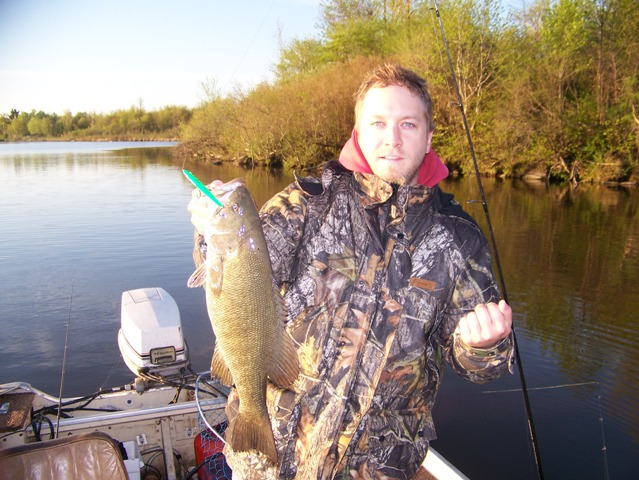
 At about 8:30am or so, I bumped into a friend on the mouth of the river who wanted a larger fish. So we traded 5 smaller fish for the one in the first picture and headed in for dinner as we both had things to do that day. Mike and his wife my cousin Amélie came over that night and we had a wonderful meal of fresh opening-day walleye and a few cold ones. It was fantastic. I thought about making another run after dinner and Mike and Amélie were both interested in coming along, so off we went. They just bought a house with access to the lake not too far from my dock so I picked them up and we were off towards the sunset. When we got to our spot, we recognized a guy in there from the morning trolling away with his 90HP Merc and asked if he’d had any luck. He was catching lots of bass and catfish, but no walleye.
We came accross the first bend of the river and the big girl hit hard. I knew I had a decent fish because she didn’t budge and I felt the wide head shakes. A few minutes later here she was.
    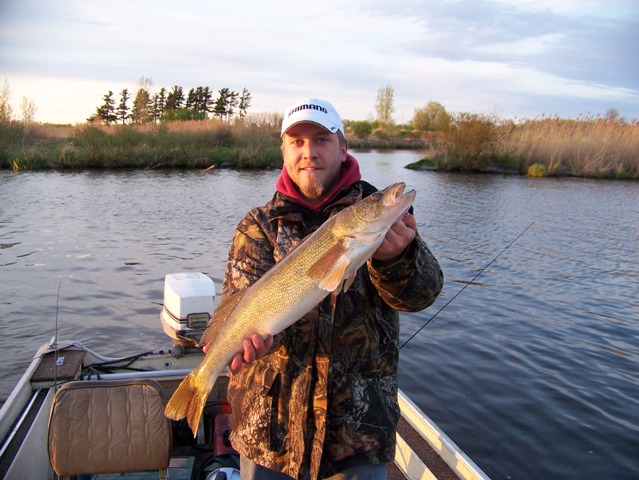
 I couldn’t tell you what the fish weighed, but I know it was 27 inches long. According to WalleyeCentral’s fish weight calculator she was over 7 pounds. Mind you this fish was very recently spawned out and was a tad on the skinny side, but was still good enough for my personal best on Lake St-Francis. I’ve seen them bigger and have landed bigger in my boat, but this is my personal record. I was ecstatic. What a rush of adrenaline to see a fish like that under the boat.
If I can provide tips it would be to cover a lot of water and concentrate on the areas that warm the fastest and have access to deeper water. The actual depth is not so important as is keying in on specific areas that are adjacent to the deepest part of the structure you happen to be fishing. In this case, we were looking for breaks in current flow, water outlets and legdes or drop offs near deeper pools. The active fish will move into the shallower parts of these areas to feed, and the deep water offers them that place to hide when they aren’t as active. As for equipment, I like to use a medium to medium heavy spinning rod with a good backbone but softer action near the tip. This is crucial because with the no-stretch line you need the rod to absorb the impact that mono would otherwise do naturally. Mono is elastic, while Fireline or whatever brand of no-stretch line you like is not. In terms of baits, a lot will work, but I like to really think about choosing colours that fit the colour of the water and I seem to find I have better luck with the slimmer profile crankbaits. Spinners will work really well too if you’re looking for numbers rather than size of fish.
I hope you enjoyed the pics and that you had a great opening day as well. Let me know about it!
 Tight lines, Jigger.
![Day_1_largest_ddfish_8[1].jpg](http://simianuprising.com/jigger/wp-content/uploads/2007/05/Day_1_largest_ddfish_8[1].jpg) Â Â Â Â Â Â Â Â Â Â Â
           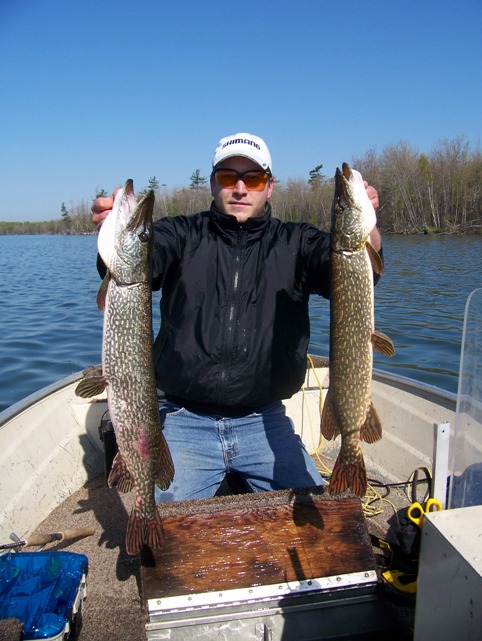





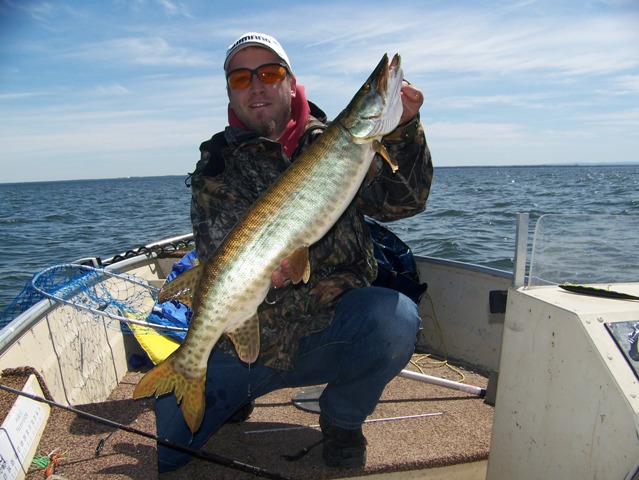
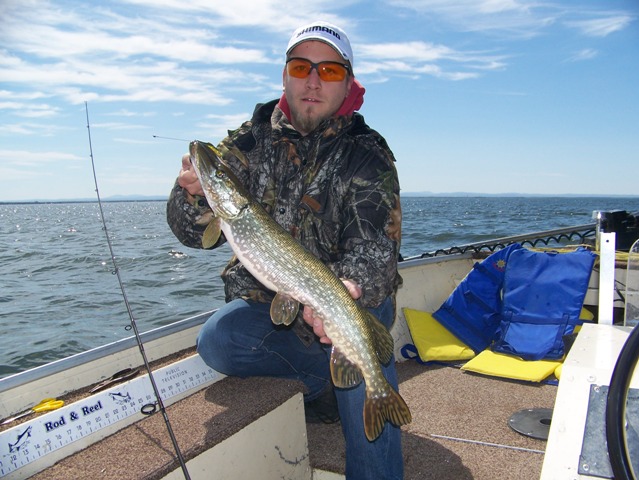
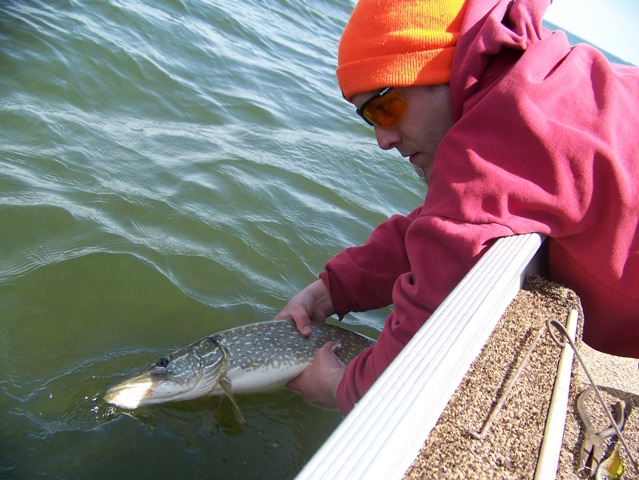
![big_girl_of_the_day[1].jpg](http://simianuprising.com/jigger/wp-content/uploads/2007/05/big_girl_of_the_day[1].jpg)
![Devil_s_fire[1].jpg](http://simianuprising.com/jigger/wp-content/uploads/2007/05/Devil_s_fire[1].jpg)
